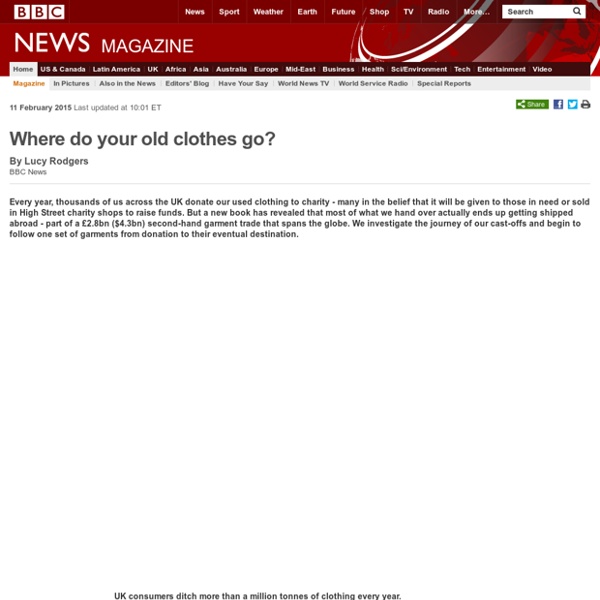Where do your old clothes go?

Wearable pineapple fibres could prove sustainable alternative to leather | Business
At weddings and formal events in the Philippines, men can often be seen wearing the Barong Tagalog, a thin and transparent embroidered garment worn over a shirt. One of the more surprising materials used in its manufacture are fibres from pineapple leaves – and long strands of the leaves could soon also be used to make a host of other products, from trainers and clothes to bags and car upholstery. Called Piñatex - piña is Spanish for pineapple - the new material was created by Carmen Hijosa, who worked as a consultant in the Philippines leather goods industry in the 1990s. She was unimpressed with the standard of goods produced and started to look for alternatives. The breakthrough came when Hijosa realised that she could make a non-woven mesh – a fabric which is bonded together without knitting or weaving – from the long fibres, in a similar way to felt. The fibres that make up Piñatex are extracted from pineapple leaves on plantations by farmers before they are cut up and layered.
The home of sustainable textile design research « Textiles Environment Design
TED's Ten « Textiles Environment Design
The TEN → sign up
Related:
Related:



